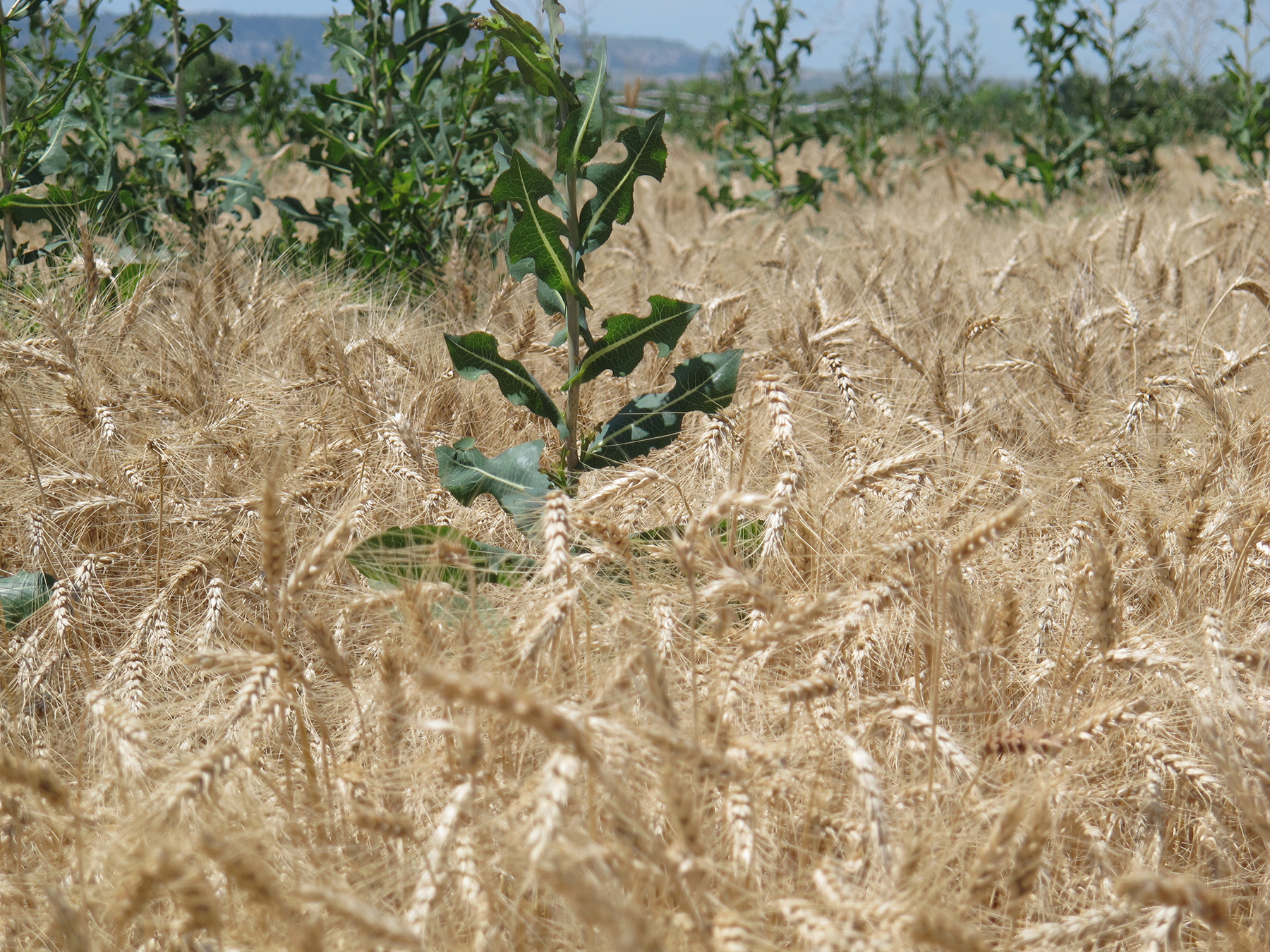It's Not Too Late for Post-Wheat Weed Control
July 24, 2015
As wheat harvest continues in the Panhandle, now is a great time to evaluate weed control programs to determine what worked and what didn't this year.

Why worry about weeds when the wheat crop has already been harvested or other crops like corn are now big enough to fend for themselves? Simply put, this year's weeds are next year's problems. Weeds are opportunistic and prolific seed producers.
For example, a single rye plant growing in a wheat field may produce nearly 800 seeds. Other weeds, like pigweeds, average 20,000 seeds but can have as many as 1 million seeds. Many of these seeds will germinate the following year and others can lie dormant to germinate in later years.At this time of year, weeds that have escaped control begin to manifest themselves. They are easy to identify in mature wheat fields waiting to be harvested, and soon they will be prominent in other crops.
In wheat, annual kochia, prickly lettuce, and feral rye are often visible from the road. Other weed problems may only be visible upon closer inspection because they grow near the ground or in isolated patches. This would include field bindweed or Canada thistle.
Growers should review their field and application notes to identify possible causes of weed control problems. In some cases, it may be necessary to consult with your agronomist or another professional. Identifying the cause is the first step to correcting the problem now and preventing future problems.
Harvest offers a convenient opportunity to identify problem weed areas. The vantage point from the cab of a combine provides the operator a unique perspective. Combine operators and growers should have a protocol in place to record and report problem areas to be treated later.Management
Patches of weeds that are naturally tolerant to many herbicides, like field bindweed and Canada thistle, may need to be spot sprayed. Other patches could indicate the early onset of herbicide resistance.
Either way, the weeds need to be treated to prevent seed development. Identify these areas, develop a treatment plan, and monitor them over time to make sure the problem is resolved.
Some weeds, like feral rye or cheatgrass, have already produced viable seed. Identify these areas and create a plan to control the weeds for the next growing season. This may include
- changing crop rotation;
- planting a different variety or hybrid to allow different herbicide options; or
- changing planting and spraying dates.
Winter annual weeds like rye, marestail, and cheatgrass can usually be controlled effectively with fall and early spring herbicide applications.
Wheat stubble with actively growing kochia, Russian thistle, and prickly lettuce should be treated as soon as possible to prevent seed development. A tank-mix of glyphosate, dicamba or 2,4-D, and appropriate adjuvants, is usually effective. Remember to follow herbicide labels and crop rotation restrictions associated with each herbicide used.Actively manage weed problems now to prevent future weed problems and yield loss. One lone weed in an otherwise weed-free field may not impact yields this year or next year, but if not properly managed, it can spread and cause huge problems down the road.
Taking the time to actively manage weeds year-round, even if it is as simple as removing a lone weed in an otherwise weed-free field, will lessen the impact of weeds for years to come.Cody Creech
Extension Dryland Cropping Systems Specialist
UNL Panhandle Research and Extension Center
Online Master of Science in Agronomy
With a focus on industry applications and research, the online program is designed with maximum flexibility for today's working professionals.
